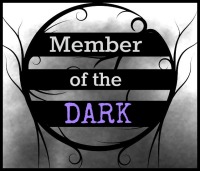
Thundercats
Anthropomorphism is when you put human traits on an animal or non-living object. This can be physical, mental, and emotional. Sounds very much like personification, right? It’s why the two get mixed up so often. We’ll compare them on Friday though. Gotta leave you wanting more.
We see anthropomorphism in a lot of fiction, especially cartoons. Thundercats, Disney movies, Looney Tunes, and everything with an animal or object that is acting like a human would fall under this category. It isn’t that they are given traits to make them more colorful in terms of description. They legitimately have these abilities such as walking on two legs, talking, and even wearing clothes. It’s not pretend, but really happening in the story. That is what makes it anthropomorphism.
Physical changes can be made to the animals and objects as well, but it’s usually with the former category. Look at the Thundercats up there. They have human-shaped bodies with cat-like properties such as stripes, spots, and claws. Instead of keeping them entirely cat-like, the creators had them be a hybrid of human and cat. This isn’t necessary for anthropomorphism, but it happens a lot. This helps make it easier for audiences to accept and see the characters acting like humans. It turns them into entirely different species as well, which opens the door for more flexibility. For example, the Teenage Mutant Ninja Turtles eat pizza even though real turtles don’t.
Going the hybrid route isn’t mandatory though. There are many examples of characters who retain their full animal form while talking and thinking like animals. ‘The Land Before Time’ does this with dinosaurs. The characters remain in their dinosaur form, but can talk and feel like humans. Same thing with ‘Bambi’, ‘Secret of Nimh’, and ‘All Dogs Go to Heaven’. Noticing that it’s a lot of old animated movies there. Also, humans don’t always understand the animals because many take the route of us simply hearing what the animals are saying for the sake of storytelling.
Now, I’m sticking to animals because they’re the most common. Yet, there are examples of non-animals. Benny from ‘Who Framed Roger Rabbit’ is an anthropomorphism taxi with an attitude. ‘Cars’ is a franchise with anthropomorphic vehicles. There’s the cast of ‘Beauty & the Beast’, but we’ll touch on them in a bit. As long as you can have the object move or speak, it can be anthropomorphized. Some don’t even have to move like a human as long as they can talk and feel. Best example there is Thomas the Tank Engine, who is a train with a face. My son was really into that franchise when he was little and the array of personalities in the characters was astounding. It didn’t matter that they were still trains and limited to their tracks. They were human-like in their adventures.
Let’s touch on ‘Beauty & the Beast’ now. There are anthropomorphized objects like teapots, clocks, and a feather duster. Why am I singling this out? It shows how you can vary the reason for anthropomorphism. Most times, this isn’t touched on at all because you’re dealing with a hybrid race or simply being made to hear the animals or objects in their daily lives. Here, we see that the anthropomorphism is caused by a curse, so you’re looking at real humans turned into objects. This can help get the idea across in certain stories, but it’s not necessary. Many people will think that you have to go into depth to explain why this is going on, but you don’t. It only has to make sense for the world and story, so going too far can hurt the tactic.
I’ve used anthropomorphism a bit in my books. Some would say Fizzle counts since he’s a dragon, but better versions may be the calicos (cat people) and fireskins (dragon people) who are common races. Talking animals are another thing, but this can be done by them naturally talking or a person under a spell to communicate. So, there is a lot of variety in ways you can use anthropomorphism. Of course, it doesn’t work in every genre since it requires a lot of suspension of disbelief.
So, what do you think of anthropomorphism? Any favorite examples?





Reblogged this on Chris The Story Reading Ape's Blog.
LikeLiked by 1 person
Thanks for sharing.
LikeLiked by 2 people
You’re welcome, Charles 😃
LikeLiked by 1 person
Disney/Pixar owe a lot to anthropomorphism. I especially think of Zootopia, Lady and the Tramp, The Aristocats, Little Mermaid, Mulan–the list goes on and on! Zootopia is a favorite of mine.
The Ents seem to be Tolkien’s way of anthropomorphizing trees.
LikeLiked by 1 person
Personally, I think Looney Tunes and Hanna Barbera really broke the mold with this. They really went wild with Porky, Daffy, Bugs, etc.
LikeLiked by 2 people
So true! They inspired so many animators, like Don Bluth, the Disney animators, Blue Sky, etc.
LikeLiked by 1 person
I immediately thought of the bunch at Looney Tunes. Mr. Ed also came to mind. Ha ha ha.
LikeLiked by 2 people
Forgot about Mr. Ed. Good one.
LikeLiked by 2 people
😊
LikeLiked by 1 person
One of my earliest reading memories is of Andre Norton’s science fiction, where she had futuristic humans traveling the stars and interacting with humanoid birds, cats and lizards. In one book, humans returned to Earth (after thinking it lost for hundreds of years) and found it populated with humanoid cats.
LikeLiked by 1 person
That sounds oddly familiar.
LikeLiked by 2 people
This is more in my wheelhouse. I’ve written plenty of this into stories. Cats, yaks, hats, even Lisa Burton could qualify under the right lens.
LikeLiked by 1 person
Androids really do fall into a strange category here.
LikeLiked by 2 people
Well, I love Fizzle! He’s probably my current favourite. Perhaps because I’m currently reading Legends of Windermere.
I like Anne McCaffrey’s dragons, too. I want one! (Although where it would live would be problematic as I only have a small back garden.)
My own little relative of dragons, Muldee, is also a favourite of mine, although perhaps I shouldn’t say so.
LikeLiked by 1 person
Everyone seems to love Fizzle. I think he made the perfect mascot. Shame I can never find a way to make affordable plushies of him.
LikeLiked by 1 person
I have a small dragon-like creature in my Wolves of Vimar series. I, too, have thought about making something like a knitted version, but it’s trying to find a pattern that’s not copyright protected. I think it would make a fantastic gift for people who sign up to your newsletter. Heyho! Probably not to be.
LikeLike
Yeah. The copywriter issue is a headache. Fizzle has dragonfly wings too, so that’s an added wrinkle. Never found a dragon pattern like that.
LikeLike
You’ve named a lot of my favourites in this article. I’ve always found it easy to believe anthropomorphised characters, from childhood cartoons and on into reading Fantasy and writing my own.
Of course dragons who can either speak or have psychic communication with humans are a must in Fantasy!
LikeLiked by 2 people
Fantasy is definitely full of them.
LikeLiked by 2 people
My dragons can speak. My small relative of dragons (about the size of a cat) are telepathic and have limited telekinesis. They also can speak.
LikeLiked by 1 person
Snap! Khadri, who appears in a short story but inspired my current WIP is very much the same, though a little bigger. He’s more the size of a raven.
LikeLiked by 1 person